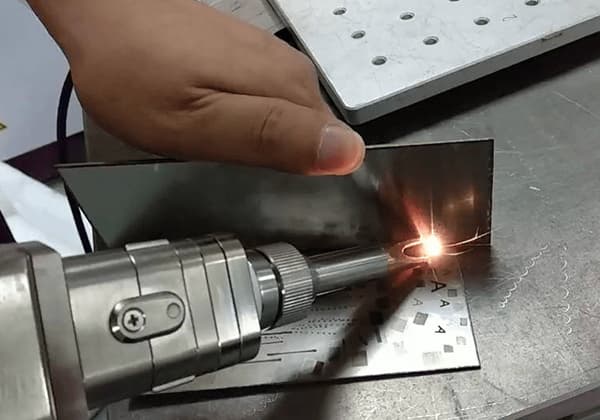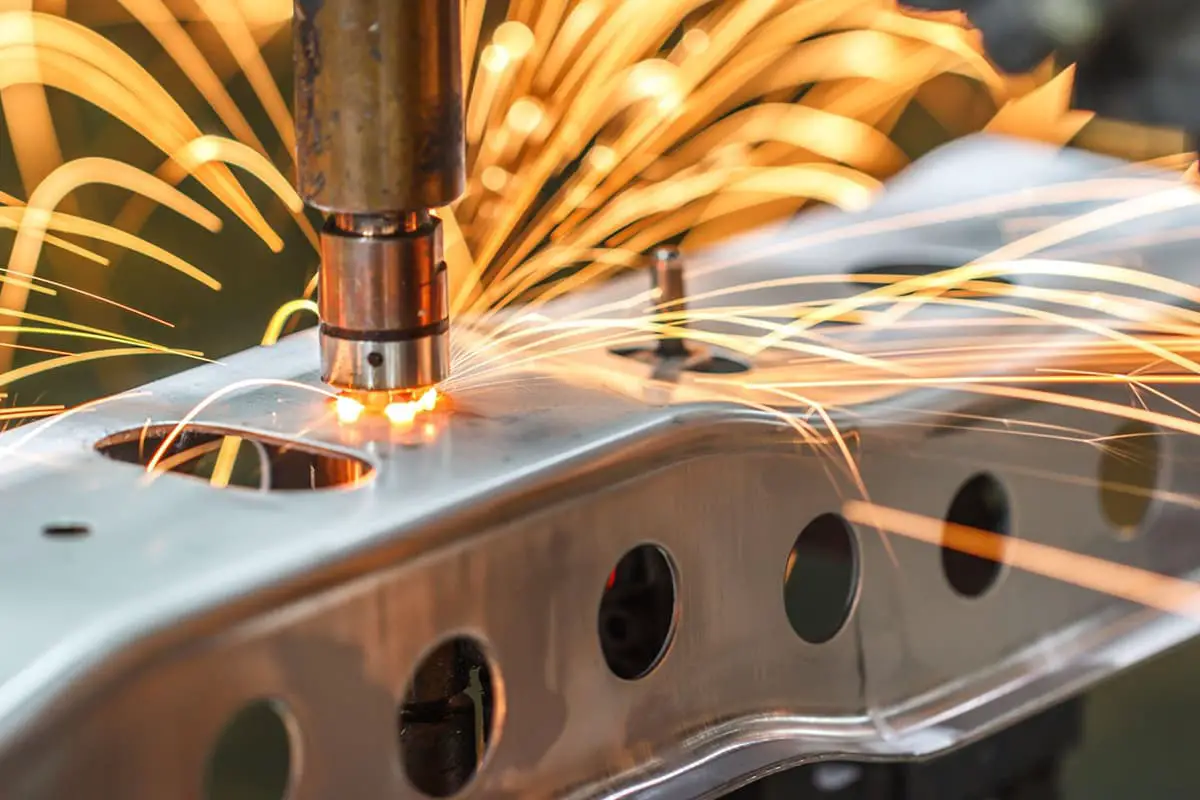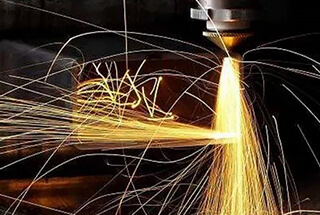1. Process parameters of laser welding
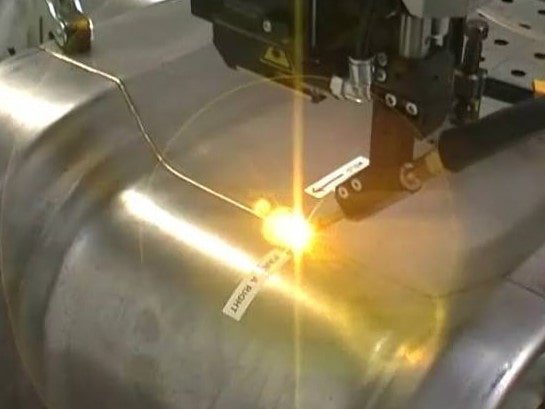
1.1 Power density
Power density is a crucial parameter in laser processing. A higher power density can rapidly heat the surface layer to its boiling point within microseconds, resulting in significant vaporization. As a result, a high power density is advantageous for material removal processes such as cutting, carving, and drilling.
On the other hand, lower power density takes a few milliseconds to reach the boiling point of the surface temperature. This allows the bottom layer to reach the melting point before the surface layer vaporizes, making it easier to create a strong fusion weld. Therefore, power density for conduction laser welding typically falls in the range of 10^4 to 10^6 W/cm².
1.2 Laser pulse waveform
The waveform of the laser pulse is a crucial factor in laser welding, particularly for sheet welding.
When a high-intensity laser beam hits the material’s surface, 60% to 98% of the laser energy on the metal surface is reflected and lost. This reflectivity is dependent on the surface temperature and varies accordingly.
The reflectivity of the metal fluctuates considerably during a laser pulse.
1.3 Laser pulse width
Pulse width is an important parameter in pulsed laser welding. It is not only distinct from material removal and melting, but also a crucial factor that determines the cost and volume of processing equipment.
1.4 Effect of defocusing amount on the welding quality
Laser welding typically requires a certain degree of defocus due to the high power density of the laser focus spot center, which can easily cause evaporation and holes. On the other hand, the power density distribution is relatively uniform on the plane away from the laser focus.
There are two defocusing modes available: positive and negative defocusing. Positive defocusing occurs when the focal plane is above the workpiece, whereas negative defocusing occurs when it is below.
According to the theory of geometrical optics, the power density on corresponding planes is approximately the same when positive and negative separations are equal. However, in reality, the molten pool’s shape is different.
Negative defocusing can result in greater penetration, which is related to the formation process of the molten pool. The experimental results suggest that the material starts to melt within 50 to 200 us after being heated by the laser, forming liquid phase metal and vaporization and commercial pressure steam, which emits dazzling white light at a very high speed.
At the same time, the high concentration of vapor causes the liquid metal to move to the edge of the molten pool, creating a depression in the center of the molten pool.
When negative defocusing is used, the internal power density of the material is higher than that of the surface, making it easier to produce stronger melting and vaporization. This enables the light energy to transfer to the deeper part of the material, resulting in greater penetration. Therefore, negative defocusing should be used for larger penetration, whereas positive defocusing should be used when welding thin materials in practical applications.
2. Laser welding technology
1) Sheet to sheet welding
It includes butt welding, end welding, center penetration fusion welding and center perforation fusion welding.
2) Wire to wire welding
It includes wire to wire butt welding, cross welding, parallel lap welding and T-type welding.
3) Welding of wire and block element
Laser welding can be used to connect the wire and the block element successfully, and the size of the block element can be arbitrary.
Attention should be paid to the geometric dimension of the wire element in welding.
4) Welding of different metals

To weld various types of metals, it is necessary to determine their weldability and range of weldable parameters.
It is important to note that laser welding can only be performed between certain material combinations.
While laser brazing may not be appropriate for connecting certain components, lasers can be utilized as a heat source for both soldering and brazing, which also offer the benefits of laser welding.
There are multiple soldering methods available, and laser soldering is primarily used for printed circuit board (PCB) soldering, particularly for wafer assembly technology.
3. Advantages of laser soldering
- The local heating reduces the risk of thermal damage to the element and results in a small heat-affected zone, allowing for soldering near the thermal element.
- Non-contact heating can melt the bandwidth without the need for auxiliary tools. This allows for processing on double-sided printed circuit boards after the double-sided components have been installed.
- The stable nature of the repeated operation, coupled with the minimal pollution of flux to welding tools, make laser brazing a favorable option. Additionally, the laser irradiation time and output power are easily controlled, resulting in high laser brazing yield.
- The laser beam can be easily split using optical elements such as half lenses, mirrors, prisms, and scanning mirrors. This allows for the simultaneous symmetric welding of multiple points.
- Laser brazing primarily uses a laser with a wavelength of 1.06 um as a heat source, which can be transmitted through optical fiber. This enables processing of parts that are difficult to weld through conventional methods, providing greater flexibility.
- The laser beam has good focus and is easily automated for multi-station devices.
4. Laser deep penetration welding
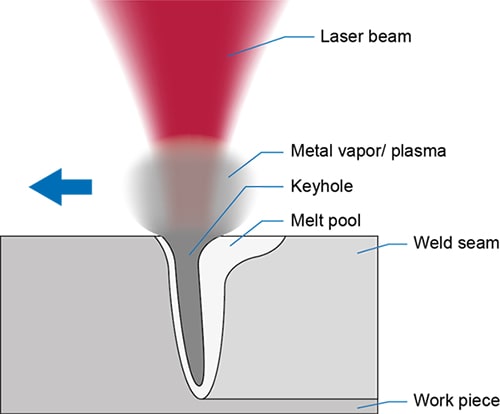
4.1 Metallurgical process and technology theory
The metallurgical process of laser deep penetration welding is similar to electron beam welding, as both rely on the “small hole” structure to complete energy conversion.
When the power density is high enough, the material evaporates, creating a small hole. This hole is filled with steam and acts like a blackbody, absorbing almost all of the incident light’s energy. The equilibrium temperature within the hole cavity is around 25000 degrees.
Heat transfers from the outer wall of the high-temperature cavity to melt the metal surrounding it. The hole is continuously filled with high-temperature steam generated by the wall material’s evaporation under the light beam’s irradiation.
The four walls of the hole are surrounded by molten metal, which is in turn surrounded by solid material. The liquid metal outside the hole flows and is kept in dynamic equilibrium with the continuous vapor pressure within the hole cavity.
As the beam moves, the hole remains stable. This means that the keyhole and the molten metal surrounding the hole move forward with the leading beam’s speed. The molten metal fills the gap left by the moving keyhole and condenses, forming the weld.
4.2 Influencing factors
The factors that influence laser deep penetration welding are laser power, laser beam diameter, material absorptivity, welding speed, shielding gas, lens focal length, focus position, laser beam position, and the control of laser power increase and decrease at the beginning and end of welding.
4.3 Characteristics of laser deep penetration welding
1) High aspect ratio
Because the molten metal forms around the cylindrical high-temperature steam cavity and extends to the workpiece, the weld becomes deep and narrow.
2) Minimum heat input
Because of the high temperature of the source cavity, fast speed of the melting process, and the low heat input into the workpiece, the thermal deformation and heat affected zone are very small.
3) High density
Because the small hole filled with high-temperature steam is conducive to the weld pool stirring and gas escape, resulting in the formation of non porous penetration welding.
The high cooling rate after welding is easy to refine the weld microstructure.
4) Strengthen the weld.
5) Precise control.
6) It is non-contact, atmospheric welding process.
4.4 Advantages of laser deep penetration welding
- The welding speed is faster with a focused laser beam due to its higher power density compared to conventional methods. Additionally, it can weld refractory materials such as titanium and quartz with smaller heat-affected zones and less deformation.
- The easy transmission and control of the laser beam eliminates the need for frequent torch and nozzle changes, leading to reduced downtime and higher load factor and production efficiency.
- Purification and high cooling rates contribute to the strength of the welding seam and overall performance.
- Laser welding’s low heat input and high machining accuracy reduces reprocessing costs, making it a cost-effective solution.
- Laser welding allows for easy automation and effective control of beam intensity and fine positioning.
4.5 Laser deep penetration welding equipment
In general, carbon steel exhibits good laser welding effects, and the quality of welding primarily depends on the impurity content.
As with other welding processes, sulfur and phosphorus are factors that can affect the sensitivity to welding cracks.
To achieve satisfactory welding quality, preheating is required when the carbon content exceeds 0.25%.
When welding steels with different carbon contents, it is recommended to incline the welding torch slightly towards the side with low carbon materials to ensure the joint’s quality.
Due to its high sulfur and phosphorus content, low carbon rimmed steel is unsuitable for laser welding.
Due to the low impurity content, the welding effect of low carbon killed steel is excellent.
Medium and high carbon steels and common alloy steels can also be effectively laser welded. However, preheating and post-welding treatment are necessary to eliminate stress and prevent crack formation.
5. Laser welding of steel materials
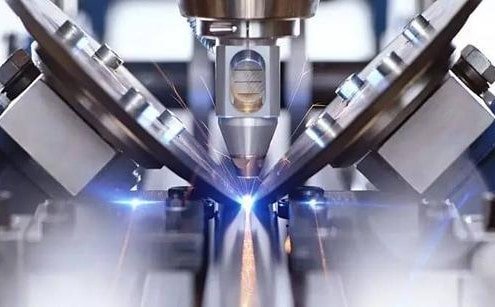
5.1 Laser welding of carbon steel and common alloy steel
In general, carbon steel exhibits good laser welding performance, and the quality of the welding is influenced by the impurity content.
Similar to other welding techniques, sulfur and phosphorus are the key factors that can cause welding cracks.
When the carbon content exceeds 0.25%, preheating is necessary to achieve desirable welding quality.
When welding steels with different carbon contents, tilting the welding torch towards the side with lower carbon content can ensure the joint’s quality.
Laser welding is not recommended for low carbon rimmed steel due to its high sulfur and phosphorus content.
Low carbon killed steel exhibits excellent welding results due to its low impurity content.
Medium and high carbon steels, as well as common alloy steels, can be effectively laser welded, but preheating and post-welding treatment are required to eliminate stress and prevent the formation of cracks.
5.2 Laser welding of stainless steel
In general, laser welding of stainless steel is easier to achieve high-quality joints than conventional welding. This is because the small heat-affected zone of high welding speed makes sensitization less of an issue.
Compared to carbon steel, stainless steel, with its lower thermal conductivity, allows for easier attainment of deep penetration and narrow welds.
5.3 Laser welding between different metals
The high cooling rate and small heat-affected zone of laser welding create favorable conditions for the compatibility of materials with different structures after the melting of many different metals.
It has been proven that the following metals can be successfully welded: stainless steel and low carbon steel, 416 stainless steel and 310 stainless steel, 347 stainless steel and hastelloy nickel alloy, nickel electrode and cold-forged steel, and bimetallic strips with different nickel content.
